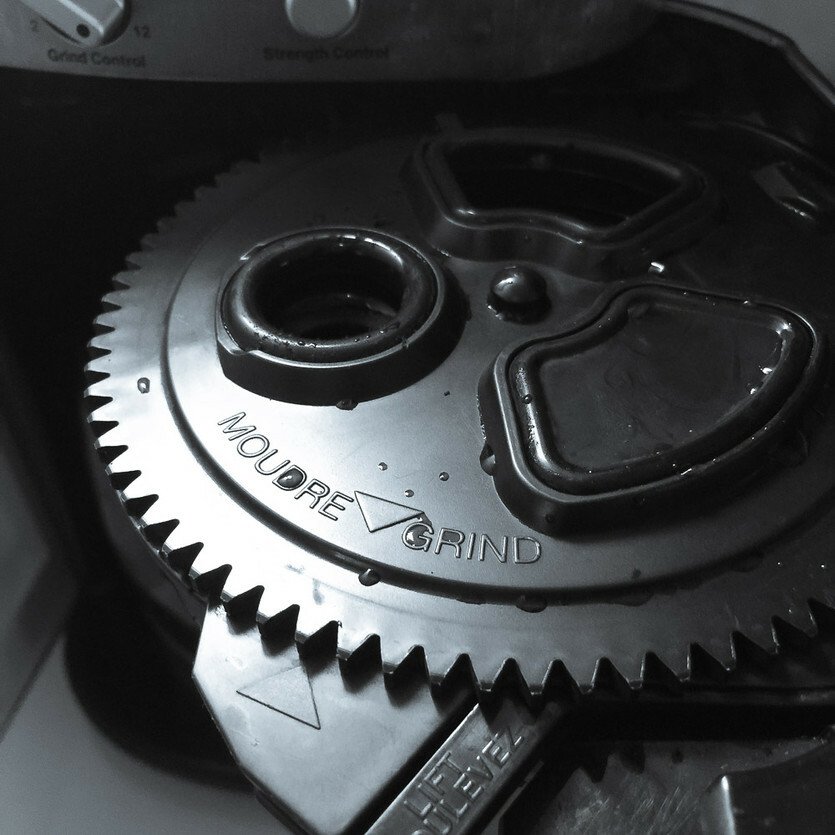How is a CMS like a coffee maker?
Our office coffee maker quit working. Our office manager hastily procured a temporary replacement because the caffeine must flow. Then she went to work on selecting a good long-term replacement.
Much research followed. Amazon customer reviews were read. Coffee makers were compared. Blogs were consulted. SurveyMonkey was deployed. Feature matrixes were compared and boxes were check-marked. Everyone gave our past experiences, wishes, complaints, and opinions—most of which contradicted each other.
After much heartache—for coffee is a subject near and dear to our hearts—a coffee maker was selected. It was highly reviewed. It has an integrated burr-grinder and a bean hopper, to ensure fresh flavor. You can tweak the grind to be finer or courser. The filter basket is gear-driven and automatically turns to let the fresh grounds through into the basket, then rotates closed to keep steam from getting back up into the hopper. It is programmable, so you can have coffee waiting when the first person arrives in the morning. It makes 12 cups or four cups equally well. It has a hot plate that’s not too hot, so you don’t get that burnt coffee flavor.
It makes really good coffee
…when it works.
You see, this do-everything coffee maker malfunctions regularly. No, that’s unfair. The machine is absolutely reliable. But its design is fraught with potential for user error.
The grinder’s bean hopper doesn’t hold enough that you can expect it to make a dozen pots; you need to top it off pretty much every time you make a pot. If you forget—which you will, because it holds enough for 2.5 pots—you get half-made coffee.
Sometimes you will forget to align the hard-to-see arrows in the gear-driven filter-basket cover. Or you do align it, but when you swing the basked closed, it pivots off a couple notches.
Depending where exactly the cover starts out, you might get coffee-flavored tea. You might get a full, rich-bodied pot of coffee grounds. You might get 12 cups of hot water on the counter.
Once you discover—probably the hard way—these potential issues, you watch for them. But when you push in the filter basket, you see the geared cover rotate a bit. Did it rotate too much? Not enough to matter? Probably it’s fine. Once in a while it’s not.
9 times out of 10, I get a pot of great coffee.
The other 10% of the time, I get to clean up a big mess.
User experience isn’t just for users
I want to make life as easy as possible for the people who manage a site’s content, conduct marketing, and provide services. In other words: you.
I know that when you hire my agency to make you a site, you don’t actually care about modules, templates, classes and code. You’ve got a job to do, and that job isn’t website engineering.
My team regularly uses CraftCMS, WordPress, Drupal, HubSpot, SiteCore and other platforms to produce sites ranging from B2C customer acquisition to focused B2B marketing, from member services and education to travel reservation systems, and even a huge digital asset management system for one of the biggest brands in hospitality.
I like to think we’ve got a handle on what makes a good CMS. It’s not features and checkboxes, workflows and approvals, modules and plug-ins.
It’s ease of use.
Manage content, not technology
I can predict how easy a CMS will be to use based on how closely related it is to your content.
The more directly you can manipulate content, the better you’ll understand the effects your edits have, the more confident you’ll be in your actions, and the more you can focus on your job, rather than technology.
When you need to publish a news article or a blog, you aren’t thinking about creating object instances. You just want to write it, perhaps set a publication date, and get on to your next task.
When you want to publish a blog, add a product photo, change a headline, download store transactions, etc, what you don’t want to do is try to remember “Do I go to Site Pages or Blog?”, or discover “Oh right, I’ve got to add a photo in File Manager and then add it to my product”. And you definitely don’t want to be thinking about Taxonomies and Views.
The more closely mapped your CMS activities are to your content and your work, the quicker and more easily you will accomplish your job. Which is not building websites, or searching documentation for the three little words that will solve your problem.
Your CMS is a coffee maker
If you’ve ever felt frustration with your CMS because you just want to get on with your job, or had the words “I hope this works” run through your head, then your CMS is our office coffee maker.
When you pick your next CMS, dig into the user experience. Will it leave you frustrated each time you use it? Or can your developer make it so closely match your content and goals that it’s a pleasure to use?
Will creating and editing content for your website be a pleasant task, quickly accomplished? Or will it be a stressful task you’ll avoid?
Remember: You won’t just be drinking coffee. You’ll be making it. Get a hands-on demo, and choose your coffee maker well.
This article was originally written in a fit of pique over a badly designed coffee maker and published at www.imarc.com/blog/cms-coffee-maker



